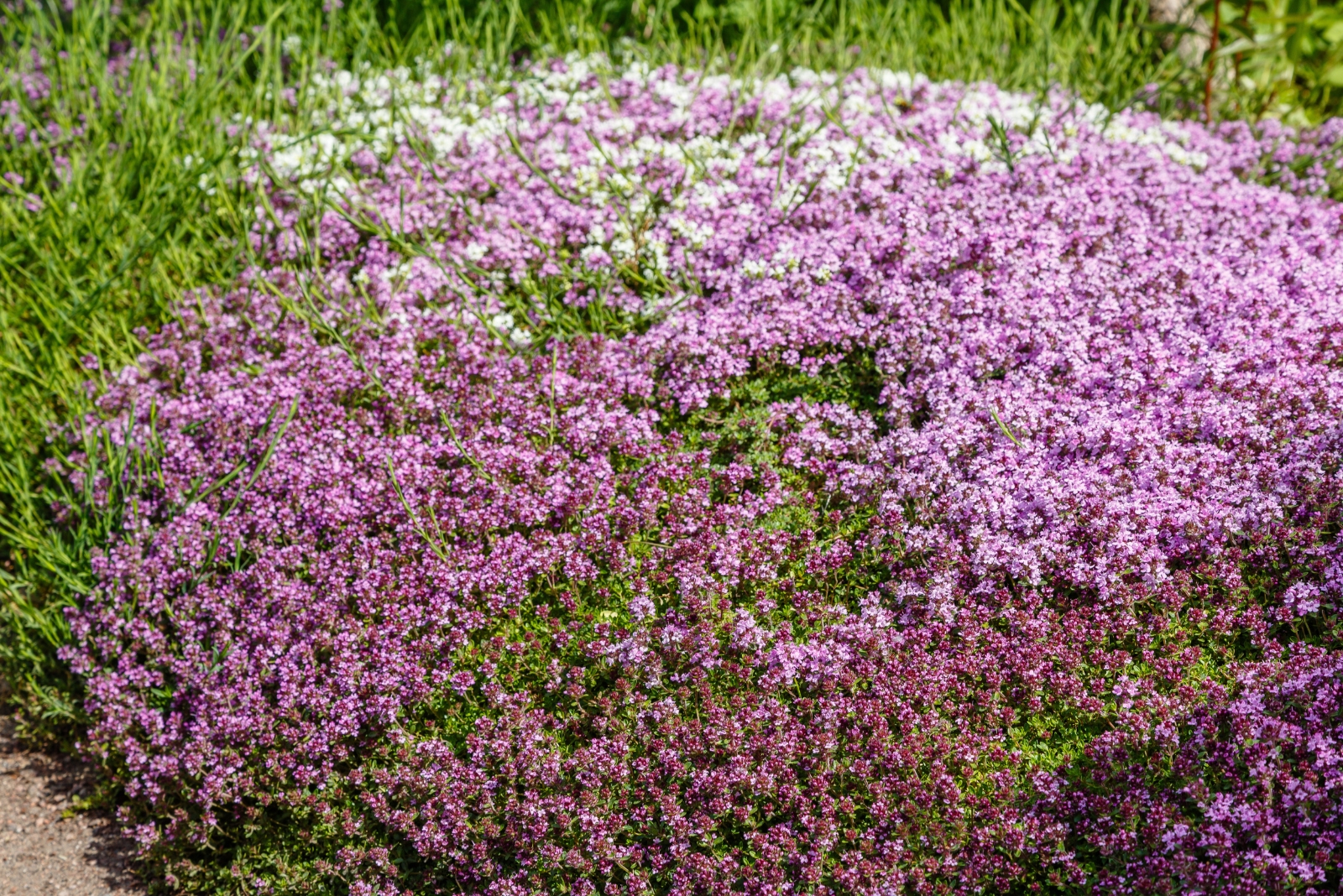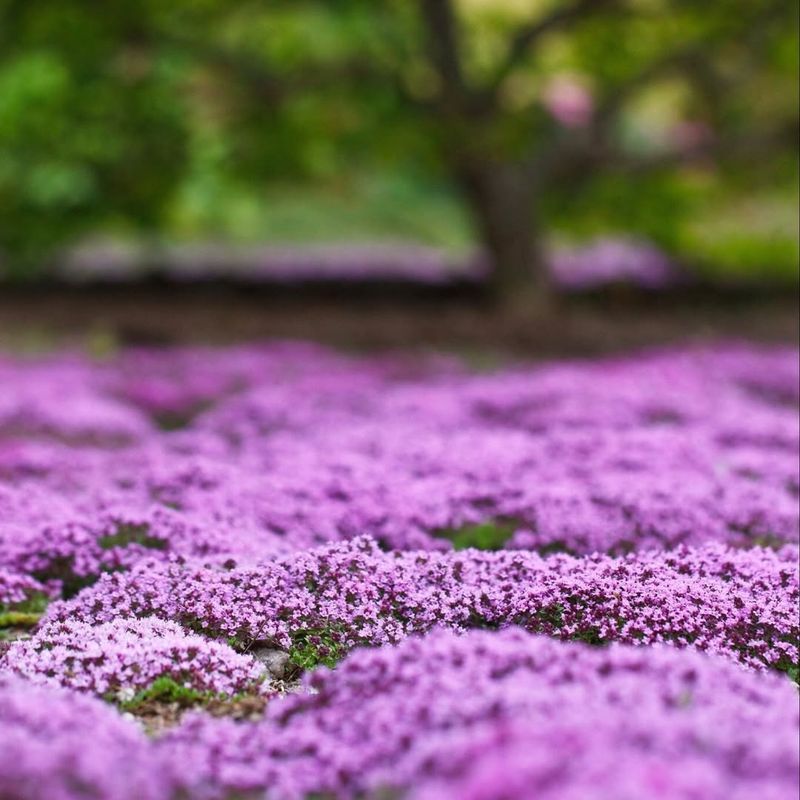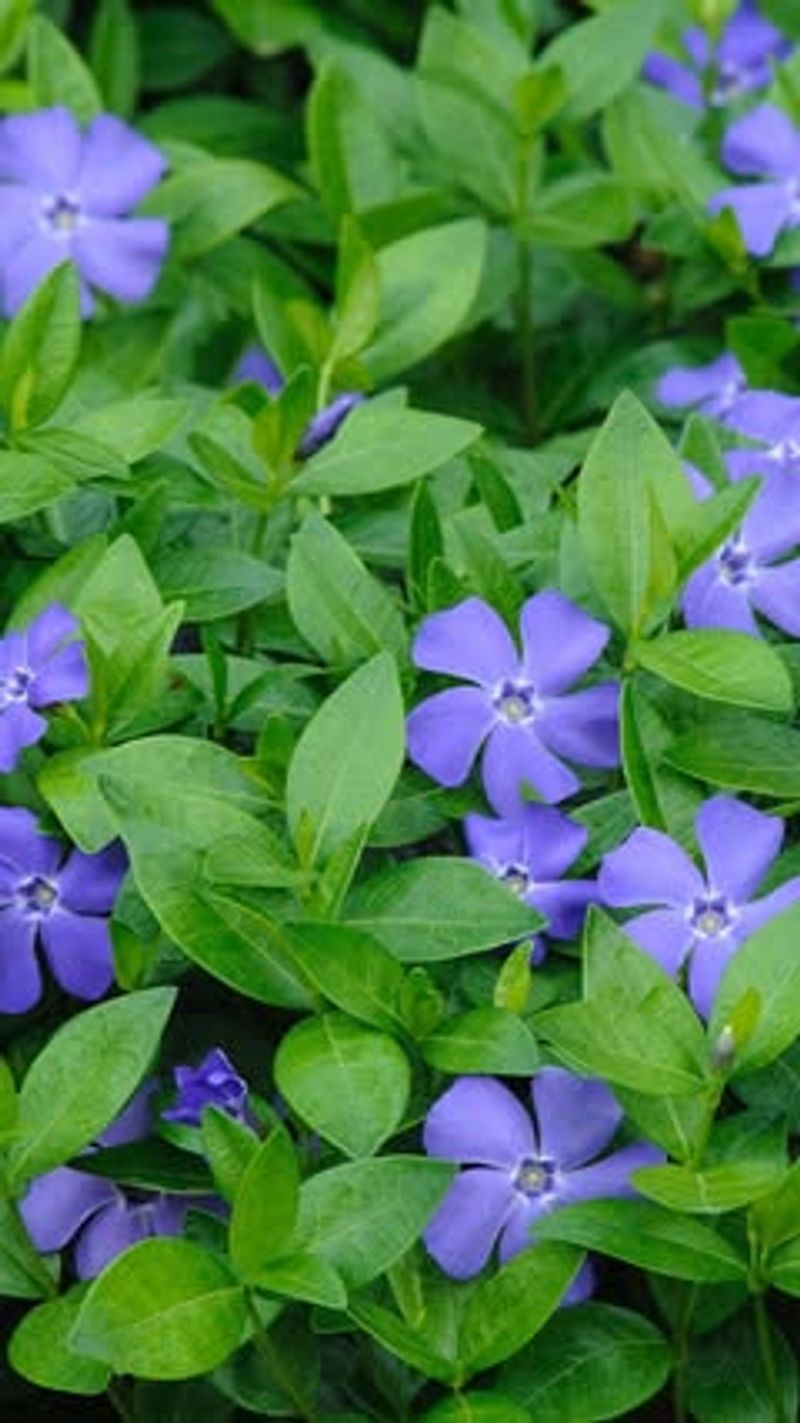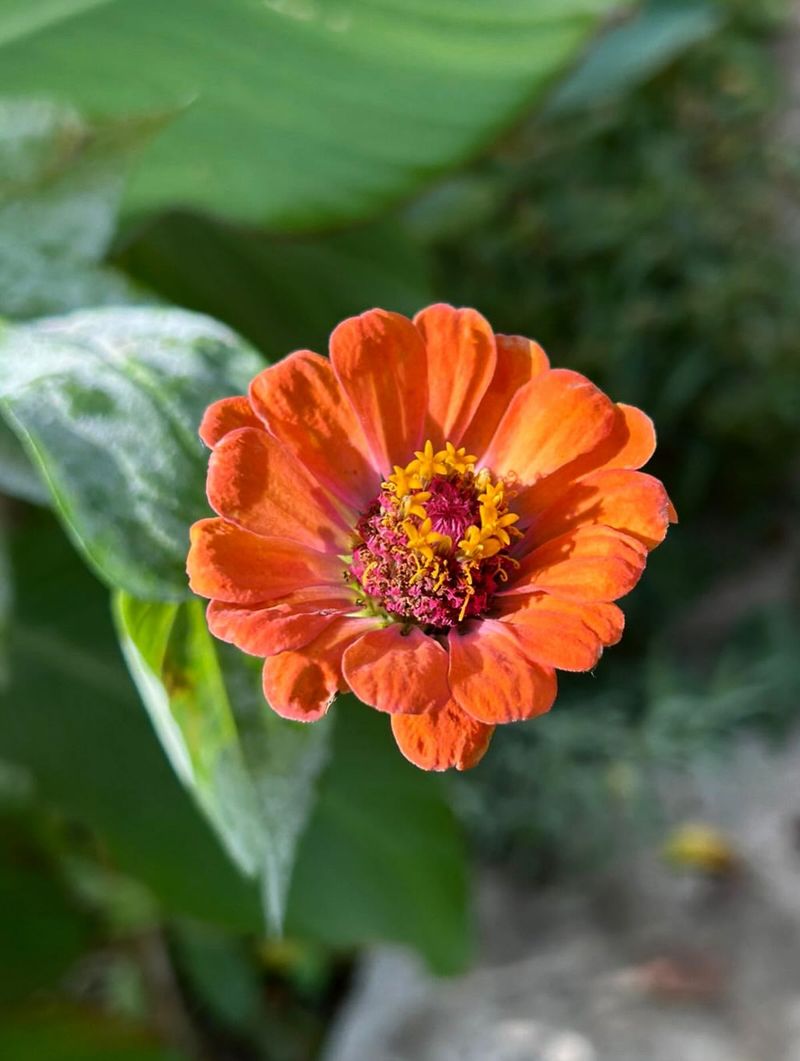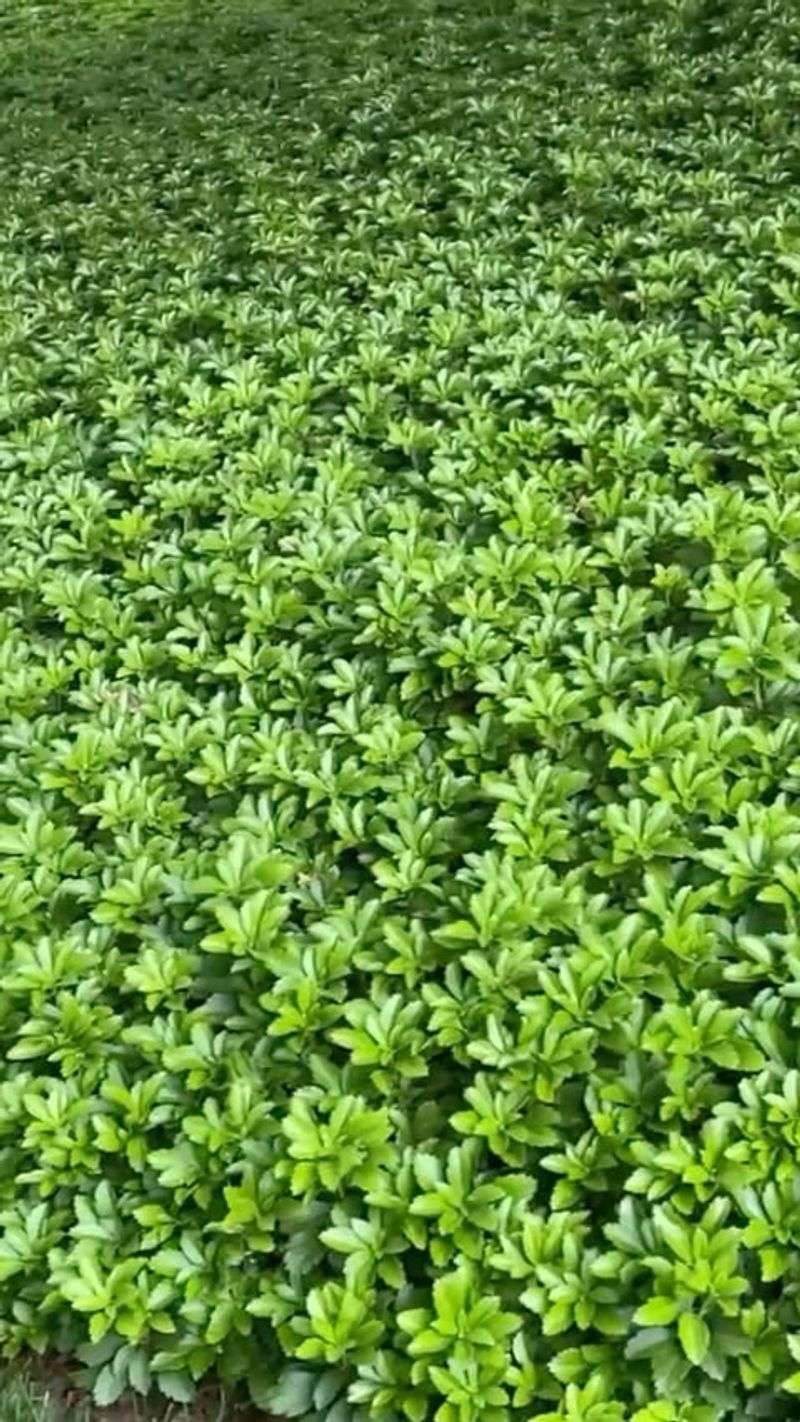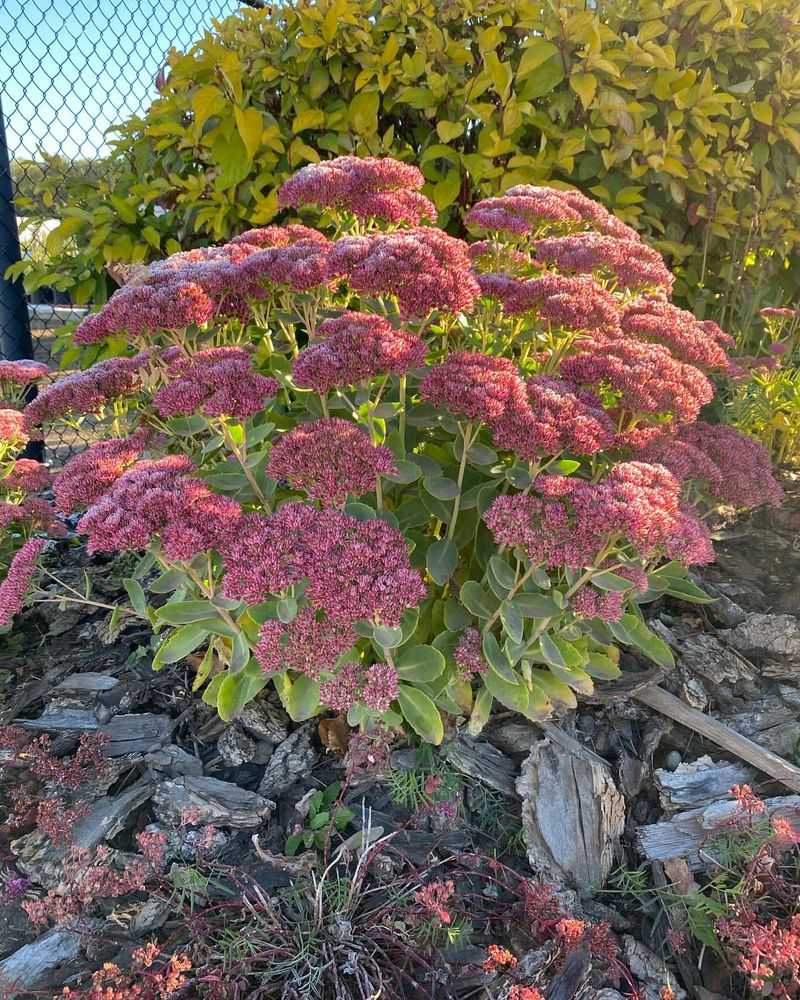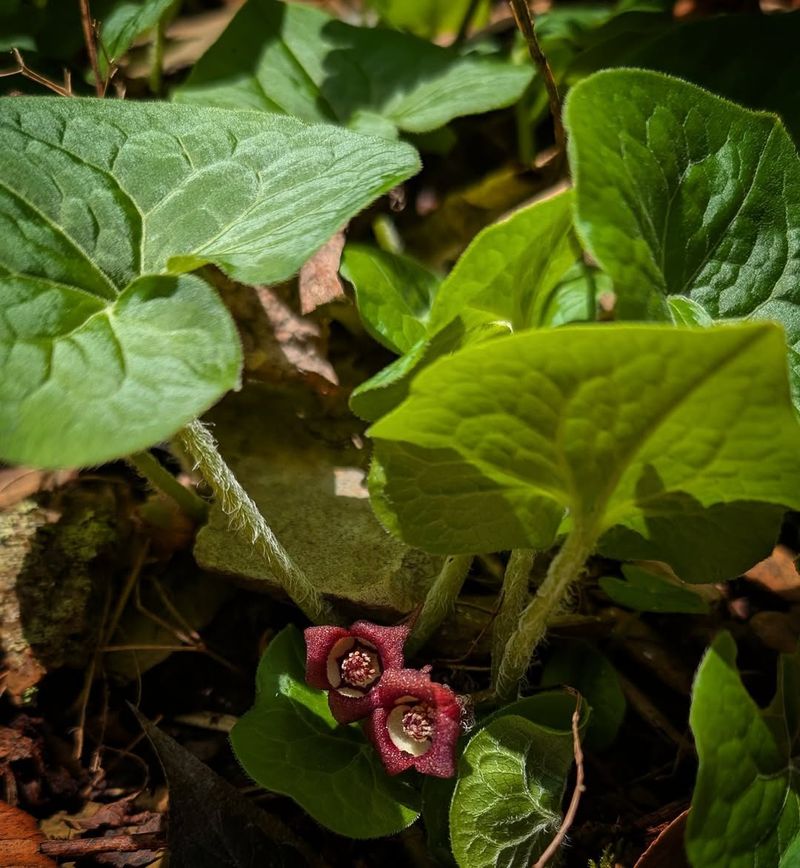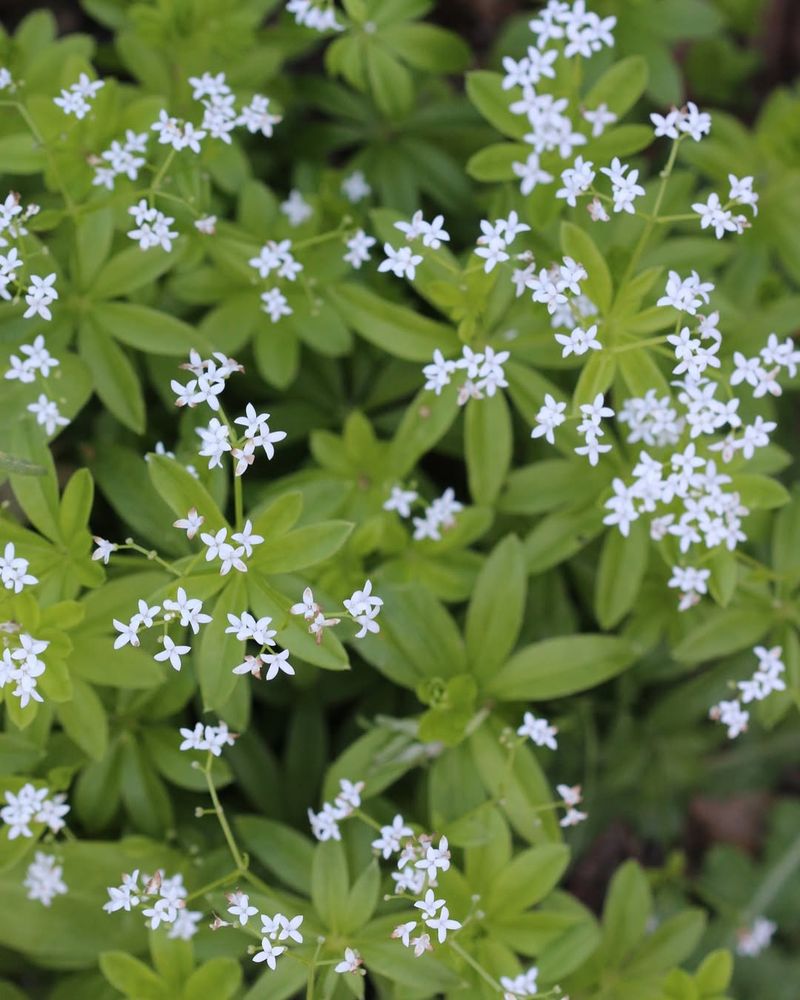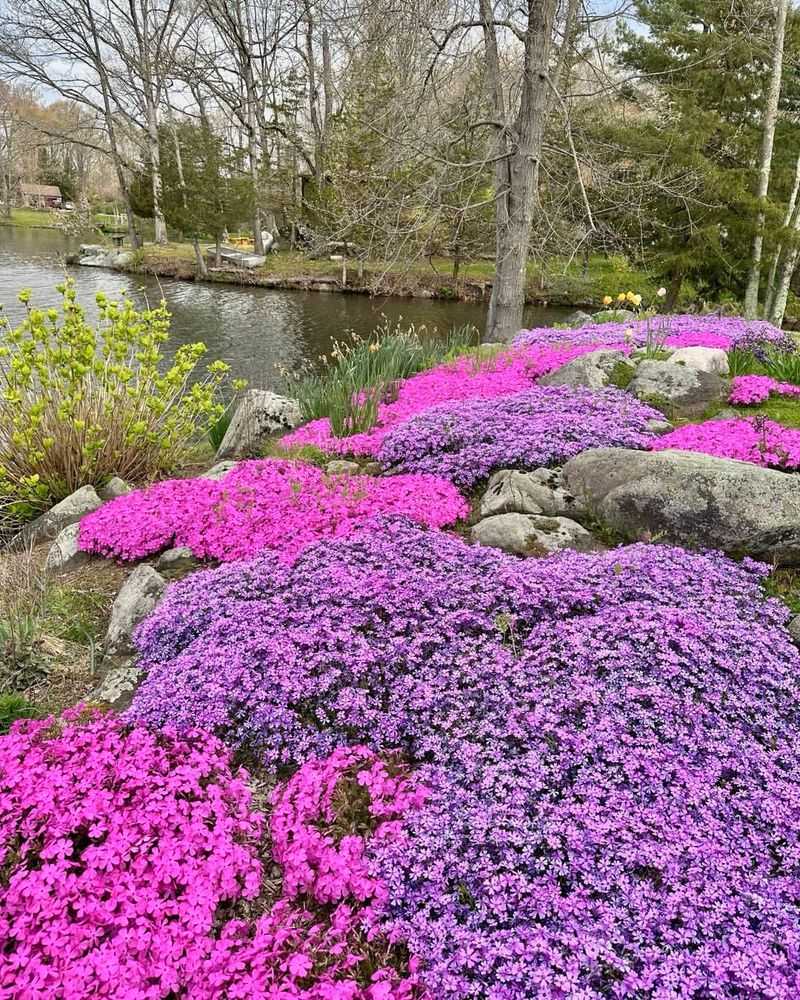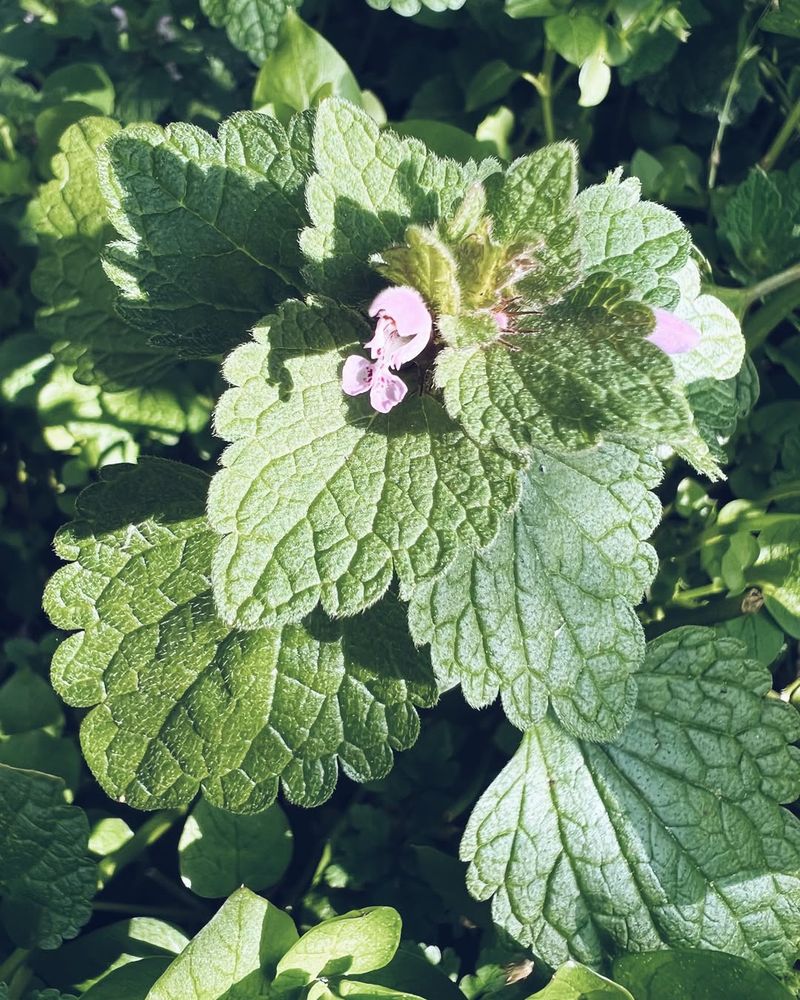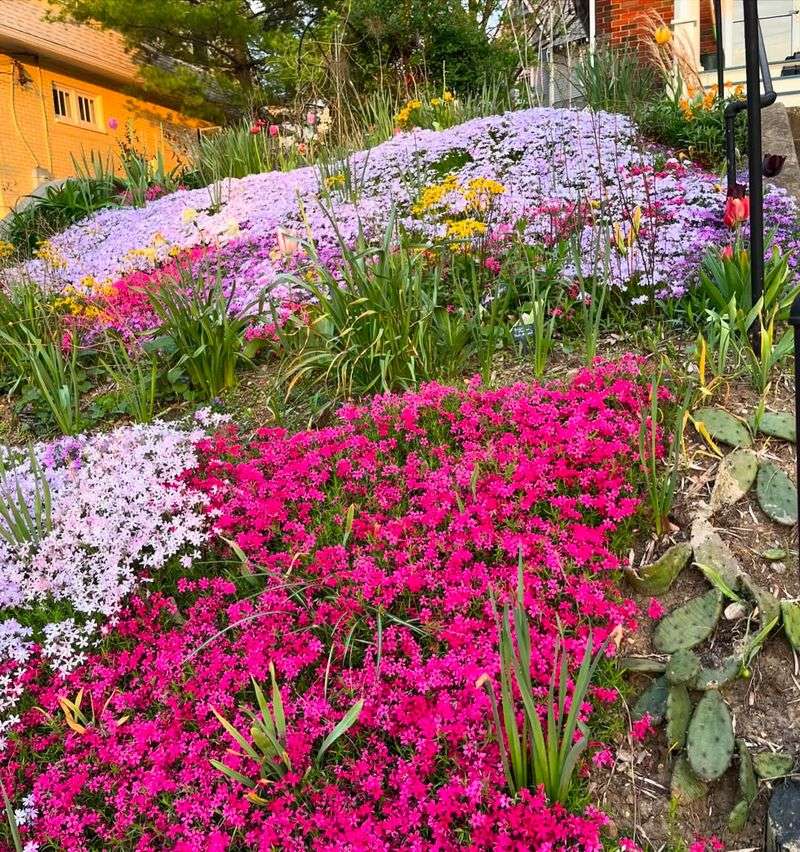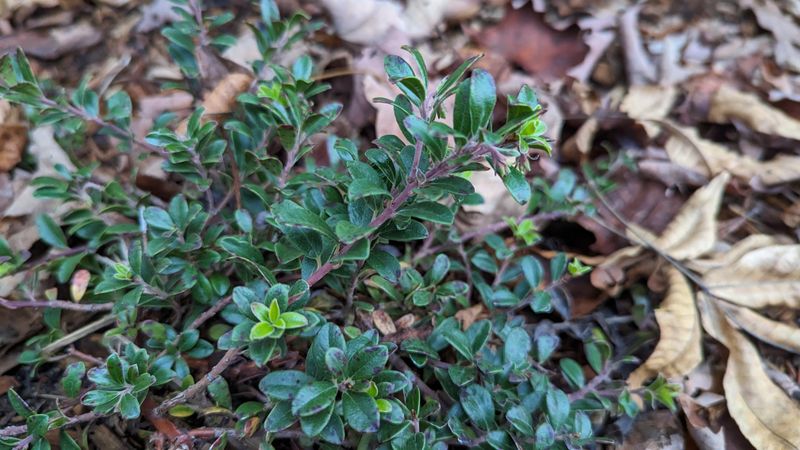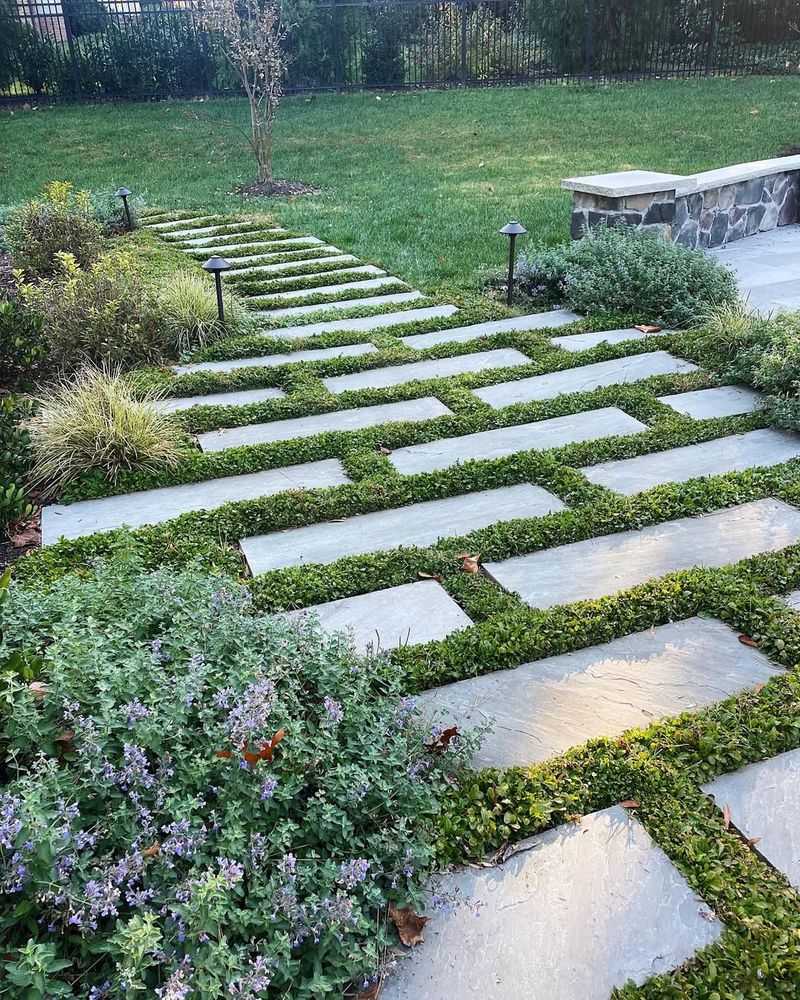Michigan gardens often have bare spots that stand out like missing puzzle pieces. The right ground covers can fill those gaps quickly while adding color and texture.
They help prevent weeds, protect soil, and make your yard look intentionally lush. Choosing fast-growing varieties turns problem patches into garden highlights in no time.
1. Creeping Thyme
Walking on this plant releases a wonderful herbal scent that makes your garden smell amazing. Creeping thyme forms a thick carpet of tiny leaves with purple or pink flowers that bees absolutely love.
In Michigan, it handles cold winters without any fuss and comes back strong each spring. The low-growing habit means you won’t need to mow it, and it tolerates some foot traffic too.
Plant it between stepping stones or let it fill in sunny bare spots where grass struggles to grow.
2. Periwinkle (Vinca Minor)
Glossy leaves and cheerful blue flowers make periwinkle a favorite for shady Michigan yards. This evergreen spreads quickly through runners, filling bare patches faster than you might expect.
It grows well under trees where grass often fails, creating a neat carpet that stays green year-round. Deer usually leave it alone, which is a bonus for many Michigan gardeners dealing with wildlife.
Once established, periwinkle needs very little water or care, making it perfect for busy homeowners.
3. Ajuga (Bugleweed)
Bronze or purple leaves create stunning color contrast in your landscape, especially when paired with green plants. Ajuga sends up spikes of blue or purple flowers in spring that pollinators find irresistible.
This ground cover spreads rapidly in Michigan’s climate, making it ideal for covering large bare areas quickly. It tolerates shade wonderfully and stays low to the ground, forming a dense mat.
The colorful foliage looks attractive even when flowers aren’t blooming, giving you year-round visual interest.
4. Pachysandra
Dense, glossy foliage creates a lush green carpet that looks professionally landscaped with minimal effort. Pachysandra thrives in Michigan’s shady spots where most other plants struggle or refuse to grow.
The evergreen leaves stay attractive through winter, providing greenery when everything else looks dormant. It spreads through underground stems, filling in bare patches steadily without becoming invasive.
Many Michigan homeowners use it under mature trees where grass simply won’t cooperate, solving a common landscaping headache.
5. Sedum (Stonecrop)
Fleshy, succulent leaves store water, making sedum incredibly drought-tolerant once it settles into your Michigan garden. Different varieties offer various colors, from green to red to golden, adding visual excitement to bare spots.
It spreads across the ground like a living mulch, choking out weeds naturally as it grows. Sedum loves sunny locations and poor soil, thriving where pampered plants would fail.
Star-shaped flowers attract butterflies in late summer, providing food when other blooms have faded away.
6. Wild Ginger
Heart-shaped leaves create a beautiful texture in shady Michigan gardens, especially naturalized woodland areas. Wild ginger is a native plant that spreads slowly but steadily, filling bare spots with lush greenery.
The roots smell like ginger when crushed, giving this plant its common name and an interesting sensory element. It grows best in moist, shady conditions similar to Michigan forest floors.
Hidden maroon flowers appear near the ground in spring, adding a surprise element for observant gardeners exploring their yards.
7. Sweet Woodruff
Whorled leaves arranged in circles around the stem give sweet woodruff a unique, attractive appearance in Michigan gardens. Tiny white flowers appear in spring, creating a starry effect above the foliage.
This plant releases a sweet vanilla-like scent when dried, which has been used historically to flavor beverages. It spreads well in shady areas, forming a dense mat that suppresses weeds effectively.
Sweet woodruff handles Michigan winters easily and prefers the moist, cool conditions found under trees and shrubs.
8. Creeping Phlox
Brilliant carpets of pink, purple, white, or blue flowers create a stunning spring display in Michigan landscapes. Creeping phlox grows quickly, spreading across bare patches and even cascading over walls or rocks.
The needle-like evergreen foliage stays attractive after blooms fade, providing year-round ground coverage. It tolerates Michigan’s cold winters without protection and bounces back vigorously each spring.
Plant it on slopes where erosion is a problem, as the roots help hold soil in place naturally.
9. Lamium (Dead Nettle)
Silver-splashed leaves brighten up dark corners of Michigan yards where nothing else seems to grow well. Lamium produces clusters of pink, white, or purple flowers throughout the growing season.
Despite the name, dead nettle doesn’t sting and actually makes a wonderful low-maintenance ground cover. It spreads quickly through stems that root wherever they touch soil, filling bare spots efficiently.
This plant tolerates both shade and partial sun, giving you flexibility in placement around your Michigan property.
10. Moss Phlox
Needle-like foliage forms a soft, moss-like mat that disappears completely under masses of spring blooms. Moss phlox comes in vibrant colors including hot pink, purple, white, and red.
It grows exceptionally well in sunny Michigan gardens with good drainage, perfect for rock gardens or slopes. The low-growing habit makes it ideal for edging pathways or filling between pavers.
Once established, it requires almost no maintenance and returns more vigorously each year, gradually expanding its territory.
11. Bearberry (Kinnikinnick)
Small, glossy evergreen leaves turn bronze in winter, adding seasonal interest to Michigan landscapes year-round. Bearberry is a Michigan native that produces white or pink flowers followed by bright red berries.
It thrives in sandy, poor soil where other plants struggle, making it perfect for challenging sites. The spreading branches root as they grow, creating a dense mat that resists weeds.
Wildlife appreciate the berries in fall and winter, bringing birds and small animals to your yard naturally.
12. Mazus
Tiny purple or white flowers with yellow throats create a charming display across this low-growing Michigan ground cover. Mazus tolerates light foot traffic, making it suitable for planting between stepping stones or in low-traffic lawn areas.
It spreads quickly through runners, filling bare patches faster than many other ground covers. The plant stays green through much of the year in Michigan, only going dormant in the coldest months.
Mazus prefers moist soil and partial shade, thriving near downspouts or in naturally damp areas of your yard.

